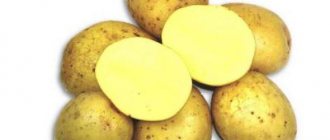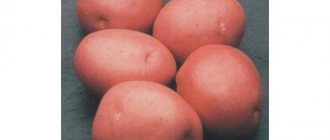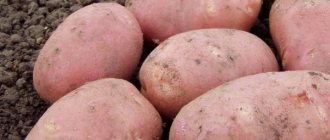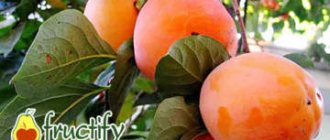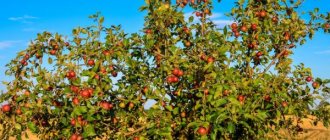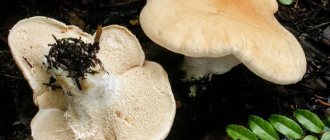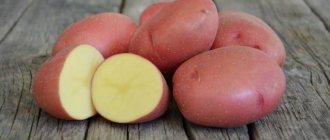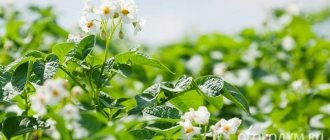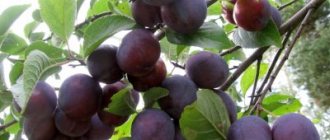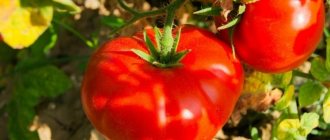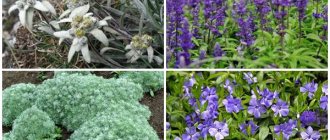History of the variety
This plum variety was bred at the All-Russian Research Institute of Genetics by breeder G. Kursakov in the last quarter of the last century. To obtain a new variety, he crossed the plum variety Volzhskaya Krasavitsa and the hybrid Eurasia 21.
These fruit crops were taken by the breeder from Michurin's garden.
As a result, a new plum variety was obtained, called Etude.
Photo of plum sketch
The sketch passed all tests with an “excellent” rating in 1983, and was entered into the State Register in 1985
and
was zoned for cultivation on personal garden plots in the Central Black Earth region. Currently, this variety is grown not only by amateur gardeners, but also on an industrial scale.
Review of Plum Etude - video
Plum Etude: characteristics and description of the variety
This fruit stone fruit tree can be found in different regions of Russia, but most often the Etude plum is grown in the middle zone, the Leningrad region, as well as in Moldova, Estonia, Ukraine, Kazakhstan and Belarus.
Summer residents noted that this variety does not require special care and is resistant to long periods of drought, as well as severe frosts.
This plum variety is not too tall - up to 2 m in height, but is capable of producing high yields. The crown is round in shape, the roots are well developed and can withstand heavy loads. Skeletal branches - with an uneven relief slightly rough surface. The bark is brown in color with a grayish tint.
The branches are brown in color and of medium thickness. The buds are oval in shape and small in size, located at a slight angle from the branches.
The foliage is large in size, their shape is oval, the top is smoothed, not sharp.
On a note!
The plum variety Etude blooms in the last ten days of May. The flowers are large in size with white oval-shaped petals, collected in beautiful inflorescences.
The ripening fruits of the Etude plum are quite large, weighing up to 25-30 g. The berries are oval in shape. The skin is dense, smooth, even, reddish in color, with a characteristic waxy coating. The ventral seam is not very deep.
The pulp is juicy, sweetish, quite tender, its consistency is quite dense, yellow in color with a greenish tint. The stone is small in size and easily separated from the pulp of ripe fruits.
Experts' assessment of the taste qualities of Etude plum fruits - 4.4 points.
100 g of plum fruit contains:
- 7.3-11.7% sugars;
- 15.4% dry matter;
- 1.9-2.1% acids;
- ascorbic acid – about 15 mg.
FRUIT TREES!
Pear August dew Pear Chizhovskaya Apple tree Lungwort
The harvested crop can easily be transported over any distance,
without losing its commercial and taste qualities. Ripe fruits can be stored in appropriate conditions for up to 50-60 days.
Good to know!
The Etude plum variety is classified as a table variety; the collected fruits can be consumed when ripe, made into jam, used for compotes, and used for preparing other preparations.
Since trees of the Etude variety are highly resistant to frost, in winter the flower buds and bark of the trunk and shoots are not subject to freezing.
And in hot weather, the tree does not suffer from drought; in general, this variety can withstand temperature fluctuations.
Characteristics of the variety
The plum variety Etude belongs to the table varieties for technical purposes. With proper care of the crop, the trees bear large, round-oval fruits of burgundy or slightly lilac color. Under the waxy skin there is a dense but juicy emerald-amber pulp, quite sweet in taste (the slight sourness is practically not felt). The tasting rating of the fruit reaches 4.3 points out of 5 possible.
The plum trees themselves are tall (up to 220 cm), with an oval crown. On the brown-silver bark of the skeletal shoots and trunk, faint ribbing is clearly visible. The remaining shoots are smooth, wide and have a pure brown color. Cone-shaped buds are medium in size, located a short distance from the stems. The leaves of the described variety are large, slightly elongated, and have a pleasant emerald hue. The leaf blade is slightly curved and slightly wrinkled to the touch.
The biochemical composition of plums is as follows: sugar - 7.2-11.9 percent; dry matter - 15.5 percent; acids - about 2 percent, P-active catechins - 142 percent, ascorbic acid per 100 grams is 15 milligrams.
Drought and frost resistance
When breeding the Etude variety, breeders took care of its good commercial qualities and resistance to adverse environmental influences, so the winter hardiness of the tree buds is very high, thanks to which the plant does not need winter shelter. Plums are not afraid of summer heat either, because even with prolonged drought and exposure to direct sunlight, the fruits only become sweeter and do not dry out.
Important! When planting young seedlings, it is still worth covering the plants during their first winter, especially when growing crops in the northern regions.
Pollinators of the plum variety Etude
The Etude plum is a self-fertile plant in which the anthers are located below the stigma. For this reason, in order to obtain a plentiful and tasty harvest, you will have to plant other varieties of plums nearby, the most suitable of which is Zarechnaya early. The flowering of the tree can be observed at the end of May.
Productivity and fruiting
Under good growing conditions, it is possible to achieve stable annual fruiting of plums, and it is quite possible to collect up to 25 kg of fruit from one plant. In the future, they can be immediately processed or put into boxes for long-term storage, for which the Etude variety is well suited.
This variety is great for small garden plots
Plum resistance to diseases and pests
High resistance to pests and diseases is another positive characteristic of this variety. Trees are not afraid of bushiness, curling, or holey spots, so the gardener does not have to waste time on preventative treatment of plums. Also, popular garden pests are not dangerous to him: hawthorn, fruit mites, aphids, lacewings.
The main advantages and disadvantages of the Etude variety
- The main advantages of plum include:
- high frost resistance (even in cold winters the buds and wood of adult plants do not suffer);
- consistently abundant yields and high taste characteristics of fruits;
- good transportability of the harvested crop and the possibility of long-term storage;
- low susceptibility to diseases and pests;
- ease of care.
As for the disadvantages of growing the Etude plum variety, the main one can be considered the need for planting pollinators, for which additional space will have to be allocated on the site.
Important! It’s good if there is an apiary near the site and bees often fly to your trees. Otherwise, they will have to be specially lured by planting honey-bearing plants in the garden - for example, phacelia, linden, acacia, mustard.
Productivity of plum variety Etude
The plum variety Etude begins to bear fruit already in 4-5 seasons from the moment of planting.
The first harvests will not be too large, but already from the 7th season, fruiting will become almost maximum.
Fruit ripening is smooth and occurs in a short time. Plum Etude is a mid-season variety; the harvest can be harvested in the last ten days of August.
This fruit tree is distinguished by regular, stable annual fruiting.
From each tree you can collect 19-22 kg of ripe berries.
The main advantages and disadvantages of plum Etude
Experts include the main advantages of the Etude plum variety:
- quite high yield;
- excellent presentation and taste of ripe fruits;
- variety resistance to major diseases and pest attacks;
- the harvested plums tolerate transportation well;
- long-term storage of fruits in a cool place (at least 2 months);
- versatility of the harvested crop;
- the resistance of this fruit tree to periods of drought;
- Etude plums are highly resistant to frost.
This fruit tree has practically no disadvantages. It is only necessary to note that the tree is partially sterile, so it is necessary to plant pollinator trees nearby with the same flowering periods, which were mentioned above.
Plum Study: planting and growing varieties
It is best to plant plum seedlings of the Etude variety in the autumn, when the leaves of the trees have fallen.
In this state, trees will more easily tolerate acclimatization and take root faster.
Photos of plum seedlings
It is better to purchase planting material for this fruit tree in nurseries, where the seedlings are sold healthy and strong, so they will produce good harvests in the future.
In addition, such trees are delivered to customers with a closed root system, so the roots are not damaged during transportation and planting, as a result, the plants quickly take root and take root faster.
On a note!
Plum requires a well-lit area, protected from gusts of cold wind with loose soil and neutral acidity.
Important details of plum planting - video
Planting holes are prepared in advance, their diameter is about 0.7-0.8 m, and their depth is up to 60 cm. A layer of fertile soil mixed with humus is placed on their bottom.
Photo of preparing a planting pit for a plum tree Etude
If the soil on the site is highly acidified, then lime or dolomite flour should be added to it before digging in the fall. A peg is driven into the hole to which the seedling will be tied.
The trees are taken out of the containers, the roots are carefully straightened, being careful not to damage the earthen ball, and placed in the center of the hole. The Etude plum seedling is tied to a peg and covered with a nutrient substrate. Then the soil is carefully compacted and watered, adding 12-15 liters of water under each tree.
Landing Features
Homemade plum variety Etude requires a special approach to planting. The seedlings must be two years old; before planting, they are placed in a limestone solution so that the roots “get used” to the soil.
Recommended timing
Homemade plum Etude can be planted in the spring, but the optimal time of year is autumn.
Choosing a suitable location
The soil for home Etude must be breathable. The best option would be moisture-saturated loams. There should be no acids in the soil, and it is advisable to check this - a neutral reaction means planting is possible. Finding a southern, flat area in the garden is quite easy, but you should not improve it. Home plum Etude does not need this.
What crops can and cannot be planted nearby?
For pollination, you need to plant the varieties listed above. It is not recommended to plant hybrids - they have a bad effect on yields. It is also not recommended to plant vegetable gardens with various fruits and vegetables; it is better to separate fruit plantings from other crops. Of course, there is nothing prohibited in planting other domestic plums, but each tree only has two or three pollinators. To grow a large garden, you need to devote more than half of the space to these purposes.
Selection and preparation of planting material
Before planting, a hole with dimensions of 70 x 50 x 60 is dug, into which humus and nitrophoska are added to the bottom. The mixture should form a slide, the mass will be 2/3 of the total volume of the pit.
Advice! It is advisable that the soil be dried, otherwise the Etude domestic plum variety will have difficulty maintaining balance.
Landing algorithm
After installing the seedling in the hole, you need to drive a peg in the middle, which will serve as support for the tree.
Clay is poured nearby (to the side). The roots need to be distributed evenly so that the tree “grabs.” The soil is trampled after filling the hole and watered when finished.
It is advisable to make a hillock rather than a ditch so that the tree can stand, since the roots of the Etude seedling are quite fragile. Additionally, you can follow the video:
Further care for plums Etude
In the future, care for the planted trees as follows:
:
- in spring and autumn, they dig up tree trunk circles;
- observe the irrigation regime;
- remove weeds and root shoots;
- add a layer of mulch;
- carry out regular pruning of plum trees.
Useful article:
How to improve the soil, its fertility, composition, structure
It is recommended to water this fruit tree once every 3-4 days, in case of drought - once every 2 days.
With each watering, add 1 bucket of water to the tree trunk circle. But if the tree receives less moisture during the period of fruit ripening, then their taste only improves - they become sweeter.
After watering the fruit plum tree, mulch 5-7 cm thick is introduced into the circle around the trunk. Dry crushed grass, straw, peat, and rotted sawdust can be used as a mulching substance.
Diseases and pests, methods of control and prevention
Etude has a strong immunity to diseases and is rarely affected by pests. Therefore, preventive measures are not carried out.
When planting, no special antifungal drugs are applied. But if you notice damaged leaves or shoots, you need to remove them and treat the plant with fungicides.
In most cases, the use of traditional methods is sufficient. The best prevention and protection is timely weeding in the tree trunk circle and removal of plant debris such as fallen leaves and branches.
How to trim a plum Study
Pruning of the Etude plum variety can be done in spring and autumn.
Photo of plum pruning scheme
In the spring, remove all frozen, broken and dry branches. The cuts must be covered with garden varnish.
In autumn, weak young shoots are removed, as well as some of the branches growing inside the crown.
How to properly prune a stone plum - video
Features of cultivation and care
The end of the growing season (autumn) is suitable for planting the Etude variety.
The best soil for planting seedlings of the Etude variety is breathable, moisture-absorbing loam. The reaction of the acidic environment in the soil should be neutral. Plum easily takes root on the site. The variety is unpretentious and does not require special knowledge to grow it.
For planting, an area is selected on the south side of the garden. This may be a hill, flat terrain or a slight slope. The ground is cleared of old leaves, grass and debris. The distance from trees is calculated to be 3 meters.
A planting hole is dug in the middle with a pattern of 70 by 50 and by 60. The top layer of soil is mixed with humus and nitrophoska. The resulting mixture is mixed in a pit and formed into a hill. The total volume of the mixture should be 2/3 of the total volume of the pit.
If the roots of the planted tree are not covered, a clay mash is made and the seedling is placed in it for 1 hour.
- A support stake is driven into the middle of the slide.
- A tree is planted next to the stake.
- Then the roots are distributed and buried in the nutrient mixture.
- The tree is shaken a little to better penetrate the soil between the roots.
- The earth is trampled down a little and the hole is completely filled with earth.
- The seedling is watered and trampled down again.
If the site has a high level of groundwater, before the formation of a hole, a half-meter elevation is artificially increased on the site.
Further care consists of digging up the circle around the trunk in spring and autumn, watering, weeding and removing debris, root growth and weeds, mulching and pruning.
The depth of the shovel when digging the soil around the tree should be about 8 centimeters.
The tree is winter-hardy and can withstand frost without additional shelter for the winter.
Drought does not harm the variety and improves the taste of plums, making them sweeter.
Watering is done 1 - 2 times a week. In case of drought, the amount of watering increases up to 3 times.
When watering twice a week, the tree should receive 20 liters of water. During drought, the number of irrigations and the volume of water increases.
Pine needles, mowed dry small grass, cereal straw, peat, humus, and sawdust can be used as mulch.
Pruning the crown of a plum tree is done in spring and autumn. Thickening and incorrectly located shoots are removed. If there are dry and damaged branches, they are pruned. Areas of extensive cuts are treated with garden varnish.
The plum tree is not susceptible to insect attack or disease, and preventive spraying is not required in this case.
Feeding plum trees of the Etude variety
If all the necessary fertilizers were applied when planting the seedlings, then in the next two years you don’t have to feed the plum anymore. And only from the third season they begin to apply fertilizers to the Etude plum regularly.
In the spring, the following fertilizing is prepared for each tree trunk circle: add 1 cup of wood ash to 8 kg of humus and mix thoroughly. This nutrient substrate is scattered over the surface of the soil and incorporated into it during spring digging.
Before the Etude plum begins to bloom and immediately after it, complex mineral fertilizers containing phosphorus and potassium are applied to the tree trunk circles.
.
FERTILIZERS FOR THE GARDEN AND VEGETABLE VEGETABLE!
Epin extra Potassium monophosphate Nitrogen fertilizer Azofoska fertilizer
When preparing plums for winter, fertilizers containing superphosphate and any potassium salt are applied to the soil
. The norm for such fertilizers is about 120 g for each square of the tree trunk circle. Once every 3 seasons, lime should be added to the soil (2 tablespoons for each square of the tree trunk circle).
You can also add a layer of mulch up to 15-20 cm thick to each tree trunk circle before the start of winter.
. It is better to use manure humus as a mulching substance.
